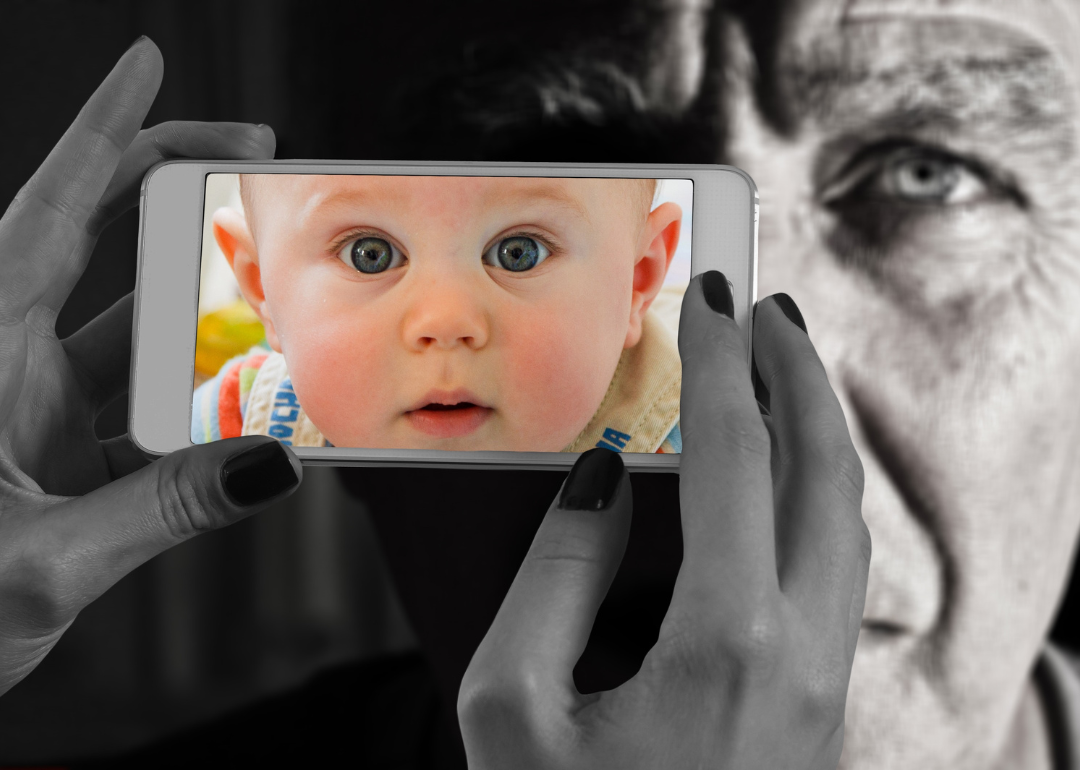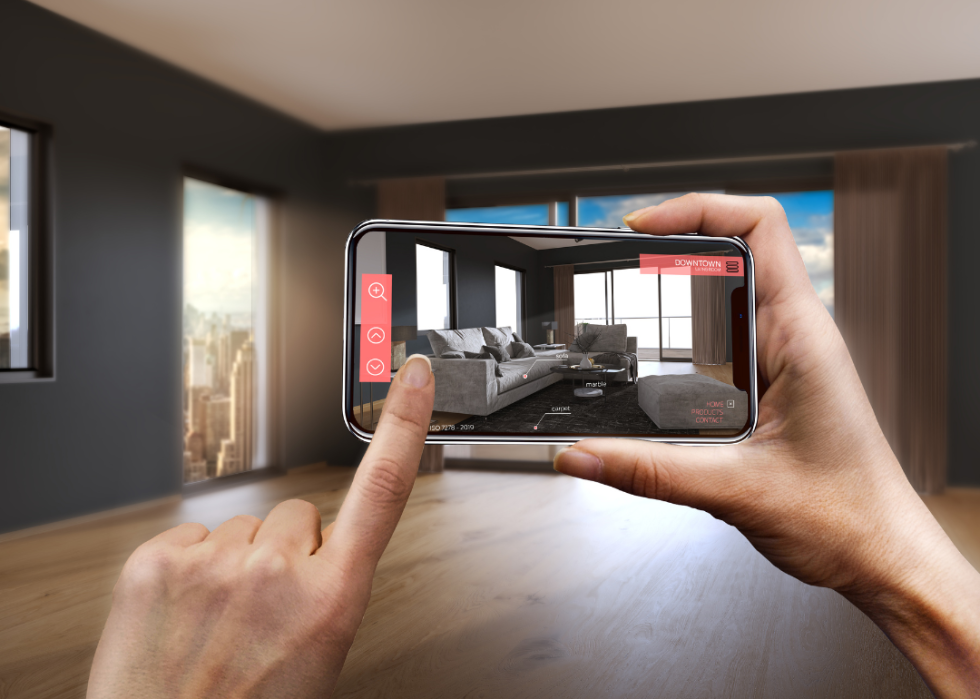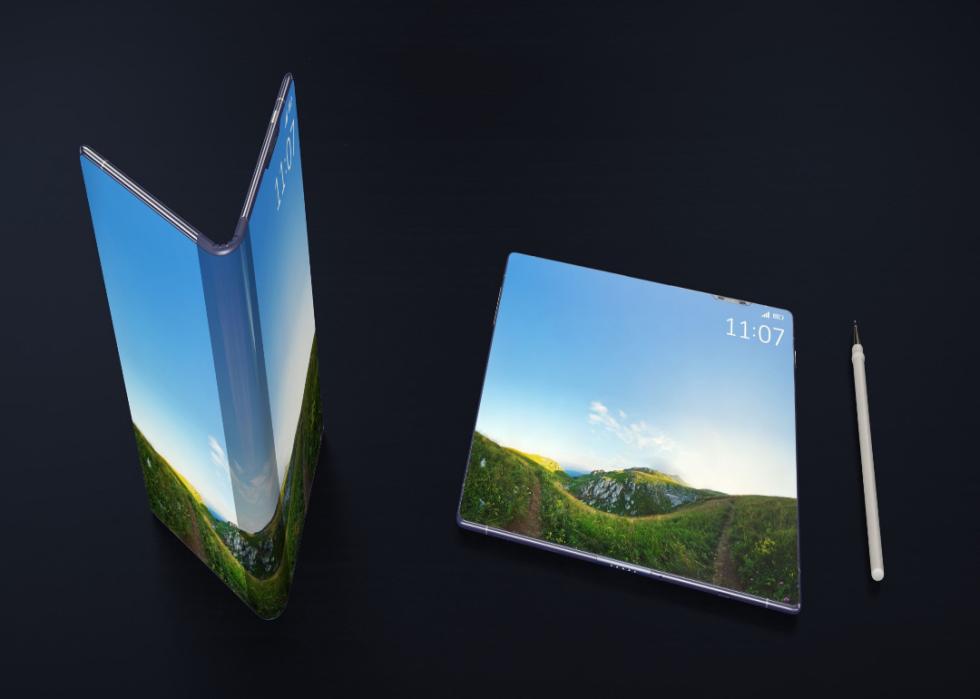
5 emerging trends that will change how you use your phone in 2024
This story originally appeared on Visible and was produced and distributed in partnership with Stacker Studio.
5 emerging trends that will change how you use your phone in 2024
Smartphone creators are constantly coming up with new ways to make their products smarter, more powerful, and user-friendly, all of which can make the phone even more indispensable for consumers. While developing some new features is a byproduct of blossoming technology, many updates are driven by rapidly changing consumer demand and trends.
To help you navigate the myriad new features set to make waves in the market this year, Visible partnered with Stacker to predict some of the biggest trends that will change how you use your phone in 2024 using news reports and consumer surveys.
Over the years, as people live more and more of their lives online and with the advent of artificial intelligence that allows companies to work with massive amounts of data, there has been a surge in security concerns.
In one 2022 Deloitte consumer survey, 67% of respondents were worried about privacy and data security on their smartphones, up 13% from a 2022 survey. The latest phones now feature a plethora of security enhancements, including encrypted phone calls and messages, data processed locally rather than in far-flung servers, and even hardware allowing consumers to turn off their phone's many sensors (through which phone makers gather data).
Another growing consumer concern is the negative environmental impact of manufacturing and disposing of cell phones, causing manufacturers to look into everything from phasing out chargers to using more recycled materials. This issue may be one of the reasons people are keeping their cell phones for longer.
Continue reading to learn about five trends impacting the world of smartphones.

Augmented reality integration
Mobile augmented reality integrates computer-generated information or content with data captured from the real world. In nonexpert terms, this technology uses images taken or viewed by the cell phone's camera to find what it deems is relevant digital content and overlays that information on the image or what the camera "sees."
People may already be familiar with mobile augmented reality if they joined in on the Pokémon Go frenzy, but some phones have had basic AR features since 2008 or earlier.
While the technology is still developing, mobile AR may be especially useful for shopping. A quick scan of a product can bring up reviews or check out sales at competitor retailers. Some apps also let shoppers see how a piece of furniture would look in their home or let people virtually try on things like makeup, hair dye, or clothes.

AI technology
Artificial intelligence refers to the ability of computer-run robots or computers to complete tasks generally associated with humans or intelligent beings. The concept of AI itself isn't new. Stanford professor John McCarthy first coined the term in 1955. Since then, AI has evolved leaps and bounds, moving from primitive AI that allowed machines to use programs to act in human ways to the more modern idea that machines can effectively "learn" to some extent.
Nowadays, it's hard to escape AI technology in phones. AI tech has generally been designed to enhance the user experience, like adjusting camera settings or filters or helping sort the images in your albums.
More recently, though, generative AI, which uses AI to generate new content, has taken center stage. Imagine being able to pick out the best facial expressions from a series of images and overlaying them into one group photo or taming a cellphone's many app functions under one digital AI assistant that books flights or orders pizza without going into each app and tapping out commands. According to market research company Counterpoint, smartphones with generative AI represented 4% of the global market in 2023—it forecasts that share will increase to 40% by 2027.

Expanded biometric security technology
Security has become a pressing concern for many smartphone users, which has led manufacturers to focus more heavily on features to enhance consumer security, in particular biometric technology—using facial structure or fingerprint for authentication. Markets and Markets Research expects the biometrics market to nearly double in five years, from an estimated value of $42.9 billion in 2022 to $82.9 billion by 2027.
While face recognition has been around since the 1960s when Woodrow Wilson Bledsoe figured out a way to classify photos based on facial measurements, and fingerprinting is even older with Neolithic carvings depicting finger ridge patterns, digital versions of these practices eventually found their way into phones in the 2000s and 2010s as machines grew more powerful.
In a world where identity theft, hacking, and online fraud are ever looming, having expanded, more robust biometric security capabilities on phones offers consumers a powerful layer of protection. Biometric data can help consumers conveniently prove their identities to financial institutions and even help secure a patient's health information.

5G network integration
5G gets its name from being the fifth-generation mobile network. In simple terms, 5G can drastically enhance the speed and quality of many of a phone's functions. Theoretically, 5G internet speeds could run up to 200 times quicker than in 4G networks. However, most users experience more modest speeds and will continue to as infrastructure develops.
Faster data transfer speeds mean downloading and uploading data can take less time than phone users are used to. Increased data transfer rates could also translate into major improvements in the clarity of video calls, real-time streaming, and high-resolution AR.

Foldable phones
So far, this list has been all about the future, but what if a bright future requires going back to the past? Interest in retro-style flip phones has been rising among younger cellphone owners. ZDNET notes a 15,369% increase in searches for flip phones in 2023.
Jose Briones, who runs a website ranking basic phones with little or none of the frills, told The New York Times the increased interest is a reaction to digital fatigue, the pressure of being online all the time. These simpler phones seem to offer a way out of the technological rabbit hole consumers have found themselves in.
On the other side of the spectrum, however, are foldable phones, which offer quite the opposite benefit: twice the screen real estate but with the ability to take up less room in one's pockets. In the last few years, major cellphone makers have introduced models with foldable displays. New models will improve with potentially larger screens and thinner chassis for improved video watching, game playing, and reading.
Additional research by Eliza Siegel. Story editing by Carren Jao. Copy editing by Kristen Wegrzyn. Photo selection by Ania Antecka.



